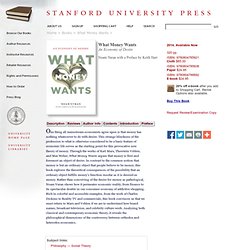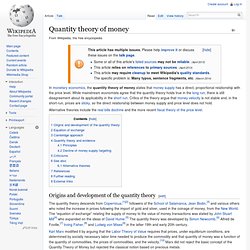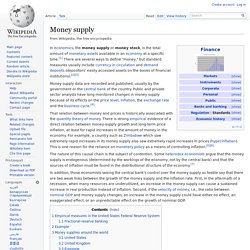

Read pages from What Money Wants: An Economy of Desire - Noam Yuran with a Preface by Keith Hart. What Money Wants: An Economy of Desire - Noam Yuran with a Preface by Keith Hart. "Noam Yuran's brilliant book offers a new point of view about the relationship between money and the desire for it.

Arguing that desire is built into the nature of money and is not an external attachment to it, Yuran opens up new readings of Marx, Veblen, and Weber, and also gives readers a new perspective on the ways in which money can inspire excess and destabilize economies. This book will be of great interest to economists, philosophers, and social theorists. "—Arjun Appadurai, New York University One thing all mainstream economists agree upon is that money has nothing whatsoever to do with desire. This strange blindness of the profession to what is otherwise considered to be a basic feature of economic life serves as the starting point for this provocative new theory of money.
Noam Yuran is a lecturer at the College of Academic Management Studies in Israel and a research fellow at the Minerva Humanities Center at Tel Aviv University. Bitcoin. Decentralized cryptocurrency Bitcoin (₿) is a cryptocurrency, a form of electronic cash.

It is a decentralized digital currency without a central bank or single administrator that can be sent from user to user on the peer-to-peer bitcoin network without the need for intermediaries.[8] Bitcoin has been criticized for its use in illegal transactions, its high electricity consumption, price volatility, thefts from exchanges, and the possibility that bitcoin is an economic bubble.[14] Bitcoin has also been used as an investment, although several regulatory agencies have issued investor alerts about bitcoin.[15] History Creation On 3 January 2009, the bitcoin network was created when Nakamoto mined the first block of the chain, known as the genesis block.[20][21] Embedded in the coinbase of this block was the following text: "The Times 03/Jan/2009 Chancellor on brink of second bailout for banks In 2011, the price started at $0.30 per bitcoin, growing to $5.27 for the year. Design Units Blockchain. Home - Bitcoin Block Explorer. Conheça o Bitcoin, dinheiro virtual usado até em site de venda de drogas.
O “bit” no nome Bitcoin não tem apenas relação com o fato de a moeda ser “virtual” – afinal, em uma época com tantos cartões de crédito e mais números em contas bancárias do que papel, a “virtualidade” do dinheiro não poderia ser um privilégio do Bitcoin.

O “bit” vem do “BitTorrent”, uma rede ponto a ponto (P2P), sem um ponto central, em que essencialmente cada internauta participante tem o mesmo valor e é anônimo. O Bitcoin não tem uma central de gerenciamento, diferente das moedas como o real, que é gerenciada pelo Banco Central. Para garantir a segurança, o Bitcoin utiliza um complexo esquema matemático de criptografia. Logotipo do Bitcoin, a moeda virtual que funciona via conexões ponto a ponto entre internautas (Foto: Divulgação) O G1 conversou com Amir Taaki e Donald Norman da Bitcoin Consultancy, uma organização destinada a promover o uso de Bitcoin fora dos círculos de especialistas em tecnologia. Foto do programa Bitcoin. Bitcoin P2P Virtual Currency.
Quantity theory of money. In monetary economics, the quantity theory of money states that money supply has a direct, proportional relationship with the price level.

While mainstream economists agree that the quantity theory holds true in the long run, there is still disagreement about its applicability in the short run. Critics of the theory argue that money velocity is not stable and, in the short-run, prices are sticky, so the direct relationship between money supply and price level does not hold. Alternative theories include the real bills doctrine and the more recent fiscal theory of the price level. Origins and development of the quantity theory[edit] The quantity theory descends from Copernicus,[1][2] followers of the School of Salamanca, Jean Bodin,[3] and various others who noted the increase in prices following the import of gold and silver, used in the coinage of money, from the New World.
John Maynard Keynes, like Marx, accepted the theory in general and wrote... "This Theory is fundamental. Where and. Money supply. Money supply data are recorded and published, usually by the government or the central bank of the country.

Public and private sector analysts have long monitored changes in money supply because of its effects on the price level, inflation, the exchange rate and the business cycle.[4] That relation between money and prices is historically associated with the quantity theory of money. There is strong empirical evidence of a direct relation between money-supply growth and long-term price inflation, at least for rapid increases in the amount of money in the economy. For example, a country such as Zimbabwe which saw extremely rapid increases in its money supply also saw extremely rapid increases in prices (hyperinflation).
This is one reason for the reliance on monetary policy as a means of controlling inflation.[5][6] Fiat money.